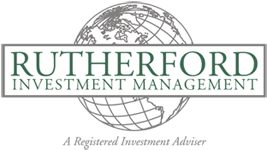Published June 6, 2025

The month’s defining moment came on May 29, when a federal trade court struck down President Trump’s sweeping tariffs. Markets rallied. Then, within hours, an appeals court put the ruling on hold. The tariffs were back. So was the confusion. Companies that had spent months adjusting to the new trade rules were back to square one.
This kind of policy reversal would have been extraordinary a generation ago. Now it is becoming routine. Companies are spending more time with trade lawyers than with their customers. The regulatory burden has become so complex that businesses are shifting resources away from innovation and growth just to navigate the compliance maze.
Yet somehow, consumers kept spending. Discretionary purchases held steady in May, suggesting that Americans are either adapting to the policy chaos or accelerating their purchases ahead of tariffs. Manufacturing orders showed artificial strength as companies built inventories, not because demand was growing, but because they feared higher import costs down the road. Employment numbers remained strong, although data emerging in early June indicates there is some softening.
At the end of the month, Jamie Dimon made headlines with his stark warning about the policy chaos causing an existential threat to the U.S. bond market. “You are going to see a crack in the bond market,” he told investors at the Reagan National Economic Forum. “It is going to happen.” Ten-year U.S. Treasury yields had already shot up to 4.42 percent during the month after a weak auction and growing fears about the proposed “Big Beautiful Bill” — a spending package that could add $3 trillion to $5 trillion to the national debt. Moody’s responded by stripping the U.S. of its triple-A credit rating. When Dimon says “this time is different,” people listen. They should. The man who was instrumental in mitigating the 2008 financial crisis isn’t known for crying wolf: “If we are not the preeminent economy and preeminent military in forty years, we will not be the reserve currency.”
A bond market meltdown is not likely imminent, barring a repeat of Liberation Day or similar policy missteps. But there will eventually be a day of reckoning. Some would say there is already at least a 75 basis points premium (an embedded “tax”) in interest rates, including for consumer mortgages, reflecting the premium over similarly rated credits required to entice investors to buy long dated U.S. debt.
While policy makers created chaos and bond investors grew nervous, corporate America quietly did what it does best: adapted and earned money. Technology companies continued to benefit from the AI investment boom. Health-care stocks held steady as much of the sector proved relatively immune to trade disruptions. Even some industrial companies posted solid numbers despite the tariff uncertainty.
Dimon pointed out there’s “an extraordinary amount of complacency” in the markets given the trade chaos. Yet that complacency might have been exactly what allowed the rally to happen. Sometimes the market’s ability to shrug off obvious danger becomes its greatest strength.
The investor psychology was telling. If April was about fear, May was about regret. Many investors admitted they were still sitting in cash, not because they thought the market would crash, but because they were paralyzed by the daily policy reversals. It wasn’t fear of missing out — it was fear of getting back in.
This is not the kind of market that rewards quick decisions or headline chasing. It’s precisely the kind of market that rewards patience and diversification. The basic principles haven’t changed, even if the daily drama has intensified.
As Will Rogers once said, “Even if you’re on the right track, you’ll get run over if you just sit there.” The right track, in this case, is staying invested. To avoid getting run over, diversify your holdings, focus on companies with strong cash flow and balance sheets, and resist the urge to make wholesale changes based on the latest Washington headlines. The fundamentals — corporate earnings and economic data — are still there for those willing to look past the noise. Those who did run for the hills when the news continued to confuse missed the extraordinary gains of May.
William Rutherford is the founder and portfolio manager of Portland-based Rutherford Investment Management. Contact him at 888-755-6546 or wrutherford@rutherfordinvestment.com. Information herein is from sources believed to be reliable, but accuracy and completeness cannot be guaranteed. Investment involves risk and may result in losses.
